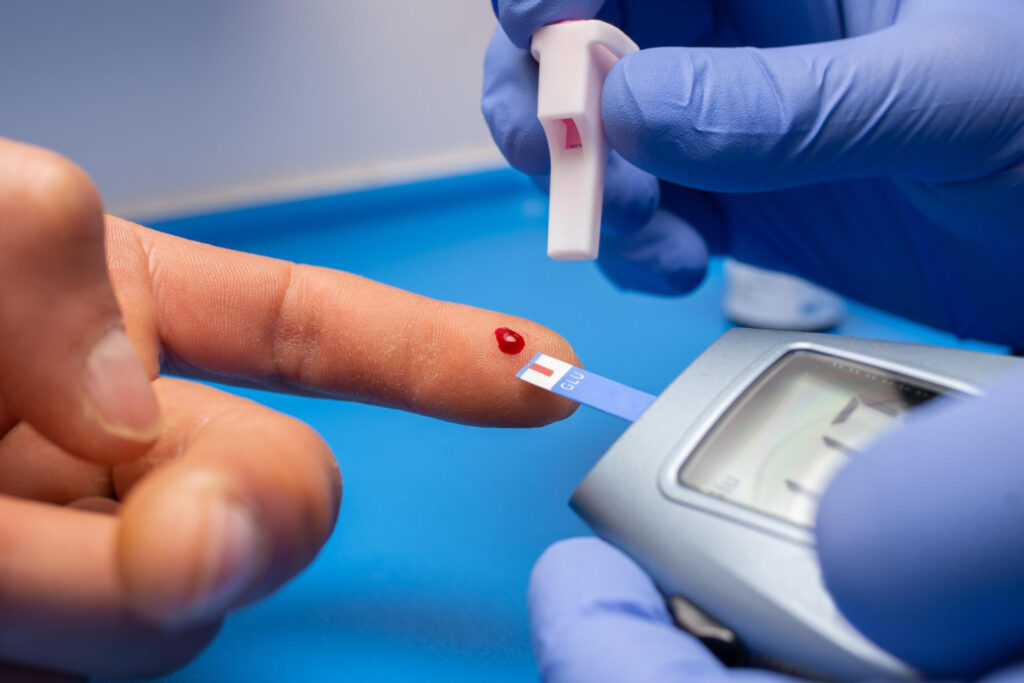Insulin plays a key role in regulating blood glucose levels and is essential for the body to function properly. For people with diabetes, regular insulin monitoring, testing and administration are the cornerstones of treatment. In this article, we will discuss what insulin standards are, how it works in the body, and how to properly administer insulin to keep blood sugar levels stable.
What is insulin?
Insulin is a hormone produced by beta cells in the pancreas. Its main function is to enable the body's cells, mainly the liver, muscle and fat tissues, to use glucose as an energy source. Insulin deficiency or abnormal response of the body to this hormone leads to diabetics - A disease characterized by elevated blood glucose levels.
Types of diabetes
There are two main types of diabetes: type 1 diabetes i type 2 diabetes.
- Type 1 diabetes - is the result of autoimmune destruction of beta cells in the pancreas, leading to a lack of insulin. It requires daily insulin administration.
- Type 2 diabetes - is the result of cellular resistance to insulin, meaning that the body produces insulin, but it is not used effectively.
Insulin - norms
Regular testing of insulin levels is crucial, especially for people with diabetes. The normal fasting blood insulin level is usually 2-25 μU/ml, but these values can vary from lab to lab. Values below or above normal may suggest problems with glucose and insulin metabolism, which can lead to diabetes or other metabolic disorders.
What kind of research is being done?
The most common test performed is fasting insulin test, which assesses insulin levels at rest. In addition, tests such as:
- Glucose load test (OGTT) - allows you to see how your body reacts to large amounts of glucose.
- Glycated hemoglobin (HbA1c) - Measures average blood sugar levels over the past 2-3 months.
- C-peptide - is used to assess insulin production by the pancreas.

Effect of insulin
The hormone works by binding to receptors on the surface of cells, allowing glucose to be transported from the blood into the cells, where it is used as energy or stored as glycogen. Insulin is also responsible for regulating fat and protein metabolism.
Insulin and type 1 diabetes
With type 1 diabetes, the body is unable to produce insulin, leading to an increase in blood glucose levels. People with the disease must take insulin daily to keep their blood sugar levels normal.
Insulin and type 2 diabetes
In type 2 diabetes, insulin is produced, but cells become resistant to it. In many cases, type 2 diabetes can be controlled with diet, exercise and oral medications, but some patients may also require insulin.
Also check the operation of Tirzepatide On diabetics.
Types of insulin used in diabetes treatment
Insulin used in the treatment of diabetes varies in terms of its speed of action, duration of effect and timing of peak action. Types of insulin can be divided into:
- Rapid-acting insulin - It starts working within 15 minutes, and its effect lasts about 2-4 hours.
- Short-acting insulin - begins to work after 30 minutes, and peaks after 2-3 hours, with a duration of action of 5-8 hours.
- Intermediate-acting insulin - It begins to work after 1-2 hours, and its effect can last up to 18 hours.
- Long-acting insulin - begins to take effect after a few hours and works for 24 hours or longer, allowing sugar levels to remain stable throughout the day.
Insulin - method of administration
Insulin administration is a key part of diabetes treatment. Insulin can be administered in several ways:
Insulin injections
The most common methods of insulin administration are injections. They are administered using special insulin syringes or pen syringes. The injections are administered subcutaneously, usually in the abdominal area, thighs or arms.
Insulin pumps
Insulin pumps are state-of-the-art devices that deliver insulin throughout the day in a controlled manner. The pump allows for more precise insulin dosing, which is especially useful for patients with type 1 diabetes who require frequent insulin dose adjustments.
Pancreatic islet transplants
In some cases it is possible pancreatic islet transplantation, which can produce insulin in the body. However, it is used infrequently, mainly in severe cases of type 1 diabetes when other treatments fail.
Recommendations for insulin administration
Proper insulin administration requires proper skills and knowledge. In order for insulin to work effectively, you must:
- Use insulin as prescribed by your doctor. The dose and type of insulin depend on the individual patient's needs.
- Change injection sites. To avoid fat thickening (lipodystrophy), insulin delivery sites should be changed regularly.
- Monitor blood sugar levels. Regular glucose measurements will help adjust insulin doses and avoid hypoglycemia.
Complications associated with insulin therapy
Despite the benefits of insulin therapy, there are some complications that can occur in people taking insulin:
- Hypoglycemia - blood sugar levels that are too low, which can lead to dizziness, weakness and, in extreme cases, unconsciousness.
- Lipodystrophy - Fatty tissue thickening at insulin delivery sites, which can impede absorption of the drug.
- Allergic reactions - although rare, allergic reactions to insulin or its components can occur.
Insulin - how to avoid complications?
Although insulin therapy complications can be troublesome, there are methods to avoid them or minimize their risk. Here are some steps to help maintain effective insulin treatment:
Regular monitoring of sugar levels
Frequent monitoring of blood glucose levels allows proper adjustment of insulin doses and prevention of dangerous states of hypoglycemia and hyperglycemia. It is a good idea to keep a diary of measurements to record the results and insulin doses taken.
Rotation of injection sites
It is important to avoid continuously administering insulin to the same areas on the skin. Rotation of injection sites helps prevent lipodystrophy and allows the body to absorb insulin evenly. It is recommended to administer insulin to areas such as the abdomen, thighs, buttocks or arms, changing the site of each injection.
Maintaining a healthy diet
People taking insulin should take care of the following balanced diet tailored to their caloric needs and type of diabetes. Avoiding sudden spikes in blood glucose levels resulting from an inadequate diet is key to maintaining metabolic stability. Meals rich in protein, fiber and healthy fats should be eaten regularly, while simple sugars should be limited.
Education and self-control
Regular training on self-monitoring of sugar levels and insulin administration is an essential part of diabetes therapy. Patients should know how to respond in case of hypoglycemia or hyperglycemia and how to adjust insulin doses depending on the situation (e.g., during physical activity or illness).
Effect of insulin on the body
Long-term use of insulin can affect the body in many ways. In addition to its direct action regulating blood sugar levels, insulin also affects fat, protein and carbohydrate metabolism. It is worth remembering that people taking insulin should regularly consult a doctor to assess the effectiveness of the therapy and any side effects.
Fat metabolism
Insulin promotes fat storage in the body, so people taking insulin may experience weight gain, especially if they do not follow a proper diet and physical activity. However, proper insulin dosage and calorie control of the diet can prevent excessive weight gain.
Effects on proteins and muscles
Insulin promotes protein synthesis, which is crucial for people who want to maintain healthy muscle mass. In patients with diabetes, appropriate insulin therapy, combined with physical activity, can help prevent loss of muscle mass and improve overall fitness.
Insulin and physical activity
Physical activity is a key part of diabetes management, especially for people with type 2 diabetes. Exercise helps to increase cellular sensitivity to insulin, which can lead to better management of blood glucose levels. Physically active people may need lower doses of insulin because exercise promotes the natural process of glucose transport to the muscles.
How to adjust insulin for exercise?
Patients should consult their doctor before incorporating intense physical activity into their daily schedule. Keep in mind that exercise can lower blood sugar levels, which may require adjusting insulin doses to prevent hypoglycemia. Typically, those planning to exercise at a moderate to high intensity should consider:
- Reduce insulin dose Before planned physical activity.
- Consumption of an additional meal rich in carbohydrates before exercise.
- Regular monitoring of glucose levels Before, during and after exercise.
Insulin - what is worth remembering?
Insulin is a key hormone in the treatment of diabetes, regardless of the type. Regular examinations, proper education and a healthy lifestyle are the cornerstones of effective insulin therapy. It is important that patients work closely with their doctor to monitor their health and adjust insulin doses to meet the body's changing needs.
Thanks to modern methods of insulin administration, such as insulin pumps and modern long-acting insulin preparations, diabetes treatment is becoming increasingly comfortable and safe. Proper insulin dosagey allows patients to lead active, healthy lifestyles, minimizing the risk of diabetes-related complications.
Sources:


